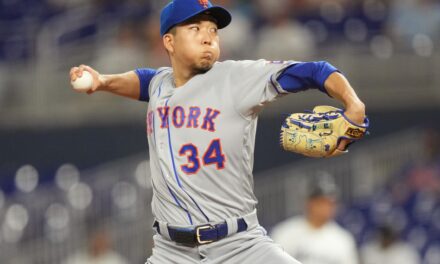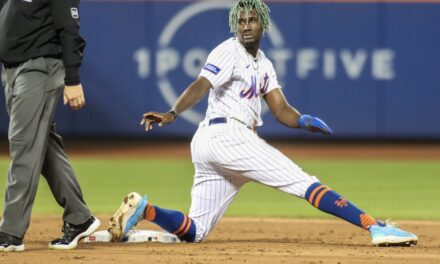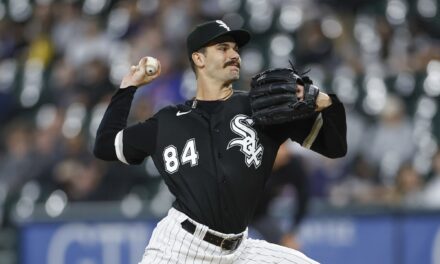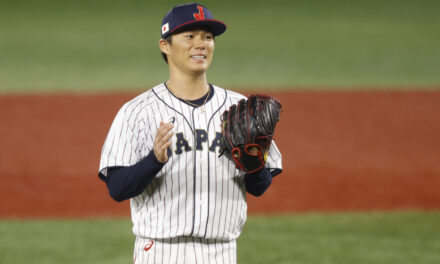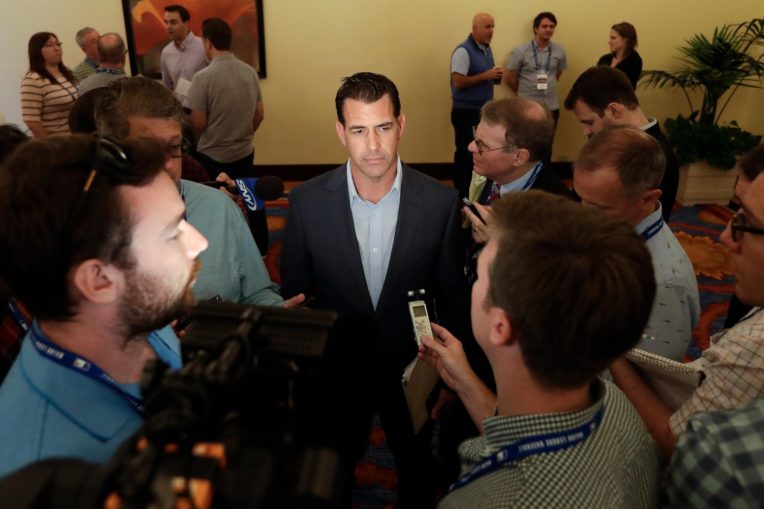
Photo: Mets.com
An MMO Fan Shot by Simon S.
I wrote this article to shed light on some relatively undiscussed realities concerning the Mets and to express my constant frustration with the front office, Mets fans, and the media since the opening salvo of this offseason — the Robinson Cano and Edwin Diaz trade — was announced.
This frustration has only intensified after Ken Rosenthal’s recent article for The Athletic chastising the refusal by the Mets’ front office to pursue Bryce Harper or Manny Machado. To my dismay, it seems like the majority of Mets fans agree with Rosenthal’s criticism.
Where does this frustration come from? Well, if anyone were to take a look at the medium-term payroll dynamics of the current Mets roster, they would quickly understand that not only is signing Harper and Machado completely unfeasible for this organization (whether the Wilpons own it or not), but also that retaining the most popular and best-performing players of this organization (the Mets core, per se) will prove to be a nearly impossible task in the near future.
It is quite likely that the Mets will be forced to enter a partial or total rebuild, involving trades of all the Mets star players, after the end of the 2020 season. This fact will become quite evident by the basic payroll projections I have broken down below.
A cursory look at Baseball Reference shows that the Mets only have about $35 million in guaranteed contracts for the 2021 season. However, this ignores a major source of payroll commitments: arbitration. There are six players – Michael Conforto, Brandon Nimmo, Noah Syndergaard, Steven Matz, Edwin Diaz and Seth Lugo – who are key figures on the current Mets team and who are slated to reach free agency either a year or two years after the 2020 season.
Let’s call these players the Mets core. A seventh player, Jacob deGrom, will reach free agency right after the 2020 season ends. For the purposes of this analysis, I will assume that the Mets extend DeGrom at an annual rate of $25 million. I will also assume that the Mets will let Zack Wheeler enter free agency and sign with another team (simply because his situation has so many outcomes and is difficult to project).
My goal is to make a baseline projection for what the Mets payroll will look like in 2020. Of course, there are so many variables in the mix here, and nobody can predict exactly what will happen. However, the point of this analysis will not be to make a perfect prediction, but instead it will be to outline a baseline scenario that sheds light on what the Mets front office will have to contend with, or better yet, the kind of hole that they have dug themselves into. Therefore, I have simply extrapolated the career performance of each of these six players and developed estimates for what they will earn in arbitration for the 2021 season.

Readers may disagree on how the final numbers should shake out, but the margin should only be plus/minus a couple million dollars for each player, assuming that these players do indeed produce consecutive consistent and productive seasons. These numbers tell a discomforting story. Added up, the projected 2021 salaries amount to $75,000,000 for six players.
But that’s not all. We must now add the guaranteed salaries for 2021 on top of the projected arbitration salaries. That includes Robinson Cano’s $24 million, Jeurys Familia’s $11 million, and deGrom’s assumed $25 million. The grand total is $135 million for nine players. This is not a welcome sight for any team, let alone a team with significant payroll restrictions.
Now let’s try to envision the rest of the roster.
For the sake of giving Brodie a little help, I will assume that the shortstop, first base, and third base positions will be filled from within. That means one of Amed Rosario or Andres Gimenez will be a serviceable shortstop, Peter Alonso will be a serviceable first baseman, and one of Jeff McNeil or J.D. Davis will be a serviceable third baseman.
This leaves the starting catcher and center fielder, two starting pitchers, four relievers, and a couple of utility/backup players as open question marks.
Let’s ignore the relievers and utility/backup players for now and throw the catcher, center fielder, and two starting pitchers onto the list of players making significant salaries. That list had nine players before, so now it has 13. We will then assume that the remaining 27 players on the 40-man roster will make an average of about $1 million each (most will be getting paid league minimum but some will likely earn between $1 and $5 million to raise the total average to $1 million).
Adding $27 million to $135 million, we get $162 million for 36 players. Keep in mind that this number could easily be a lot higher, depending on how many cheap free agents and first/second year arbitration-eligible players the Mets have. The remaining four players will occupy the positions that we have identified as question marks earlier. The Mets will either have to sign these players in free agency or trade for them.
Of course, it’s impossible to know what will happen, but just for argument’s sake, let’s assume that the Mets fill those positions with the same kind of contracts they have handed out this winter. Jed Lowrie, Jeurys Familia, and Wilson Ramos are all making about $10 million a year, so assuming that the Mets hand out four similar contracts, the final payroll number will climb to about $202 million.
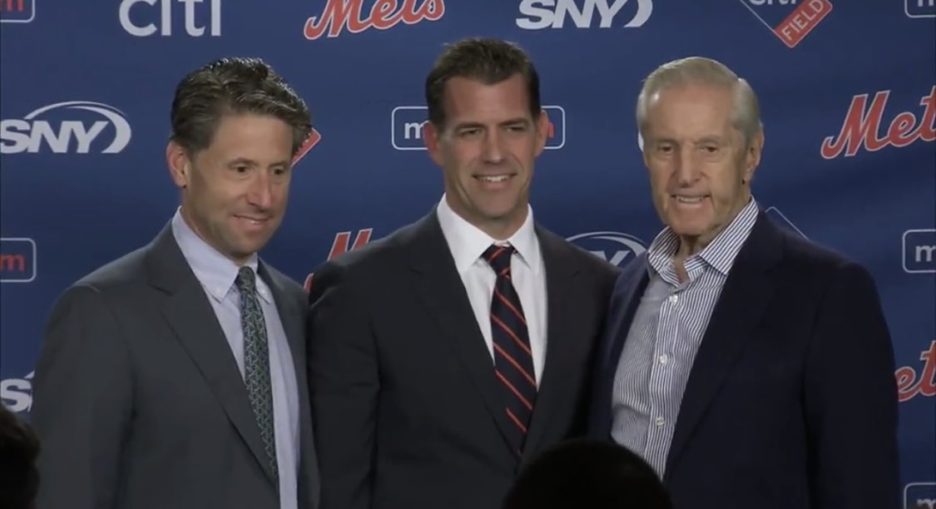
As we all know, this kind of payroll would be uncharted territory for the Wilpons. In fact, it would be uncharted territory for almost every MLB team, and it would put the Mets in the same category as the Yankees, Red Sox, Dodgers and Nationals. The only way the Mets could conceivably spend at this level is with a marked rise in attendance and ratings that brings about considerably higher revenue.
Even this may not be enough for the Wilpons. In short, the team needs to win, and win big, in the next two seasons. If they can do that, and then Brodie signs our star players to well-earned extensions and keeps fielding elite teams, I will call him a genius. However, the more important question is: what if they don’t win? Any extensions given to the Mets’ core players will likely amount to a raise compared to their arbitration salaries, which means that the payroll projected above would have to keep growing if the Mets tried to retain their core. If the Wilpons continue to budget only about $150-$160 million, this will be impossible.
Radical change might have to be the answer. That may mean doing what the Marlins did when they traded Stanton, Ozuna and Yelich in one offseason. On the other hand, they can try a temporary retooling like the strategies currently being undertaken by the Diamondbacks, Mariners, and Rangers.
Of course, this involves losing key players and fan favorites, like when Arizona traded Paul Goldschmidt. Or, they can mimic the Royals by keeping all of these players for the 2021 season for one last hurrah, before letting them walk in free agency and starting the rebuild. Of course, they can also be the Ruben Amaro Phillies and burn all their cash and prospects in order to fund increasingly older, more expensive, and losing teams.
To me, none of those options sounds appealing, but unfortunately, given the payroll realities, they are almost inevitable if the Mets cannot win. Even if the Mets do win, they may still be inevitable for all we know. Furthermore, the scenario outlined by the payroll estimates above is likely in the upper end of possible outcomes for the next two years, since it assumes that the entire Mets core will be productive and that shortstop, first base, and third base will be filled internally by prospects or unproven players. If any of these assumptions were to be wrong, then it becomes even less likely that the team will win, and therefore the rebuild could be initiated even sooner.
If anybody is asking why the Mets can’t simply fill catcher, center field, and both starting pitcher slots from within, then just look at the upper minors of this organization. There are no high-impact prospects available at any of these positions. Of course, one of Chris Flexen, Drew Gagnon, Corey Oswalt, or a similar player can pull a Jacob DeGrom and emerge out of nowhere to claim a starting pitching slot, but this is incredibly unlikely and should not be included in any baseline scenario.
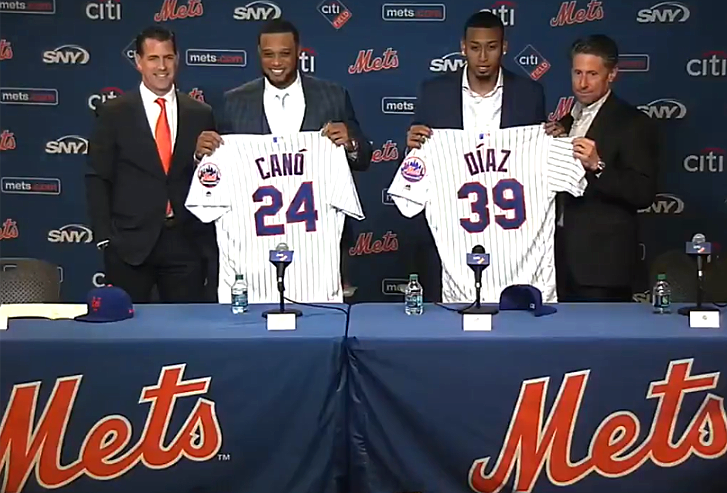
This analysis shows just how much the Cano/Diaz trade damaged this organization’s long-term future. Jarred Kelenic was the only high-impact outfielder in the entire Mets farm system (except for maybe Ross Adolph, who has since also been traded). After Franklyn Kilome’s injury, Justin Dunn was the only high-impact starting pitcher in the upper minors. Dunn was the only pitcher who could have reasonably been expected to make a successful jump to the majors before 2020 and immediately earn a spot in the rotation. Furthermore, Cano’s $24 million annual salary is occupying a huge chunk of the projected total payroll for 2021. Without it, the Mets would have significantly more flexibility to retain their core and build a sustainable roster.
In short, this situation was not a natural fate for the Mets core; instead, it was consciously brought about by one momentous move: the Cano/Diaz trade.
The fact that Brodie pulled the trigger on this trade shows that his priority is to win at all costs in the next two years. If he fails in this goal, he is likely more than ready to completely dismantle the roster. This is the source of my frustration.
I am 21-years-old and I became a Mets fan around 2007. For most of my time following the team, the Mets were terrible. The young players on this team were the light at the end of the tunnel. They have been a part of so many amazing moments and are largely responsible for the teams’ return to relevance. As a fan of this team, is it wrong to wish for a front office that can ensure that at least some of these players can be Mets for the rest of their careers, just like David Wright?
It was heart-wrenching to see Jose Reyes leave, so I can only imagine how terrible it will feel to see players like Conforto, Nimmo, and Syndergaard all leave at the same time. And what’s worse is that most Mets fans don’t get it – most still think that the Mets have enough payroll space left to sign Harper or Machado. Most are perfectly happy to give Brodie the benefit of the doubt without considering the long-term consequences of his moves, simply because he is trying to “win now.”
Brodie took a calculated gamble with the Cano/Diaz trade, and frankly, the rest of his trades as well. All of them share one common element: trading prospects for immediate help. He is betting that this team can win enough in the next two years to provide him with the resources to sustain a higher payroll and continue being competitive with a poor farm system. If he loses the bet, Mets fans can effectively say good-bye to many of the players we love. In short, the expiration date for this Mets core has been set.
* * * * * * * * *
This Fan Shot was contributed by MMO community member and die-hard Mets fan Simon S. Have something you want to say about the Mets? Send your article to [email protected] or use this Contact Form. Or ask us about becoming a regular contributor.


